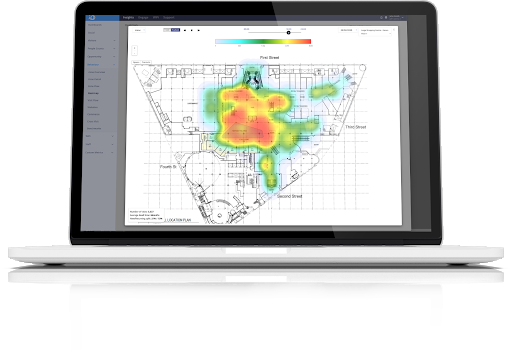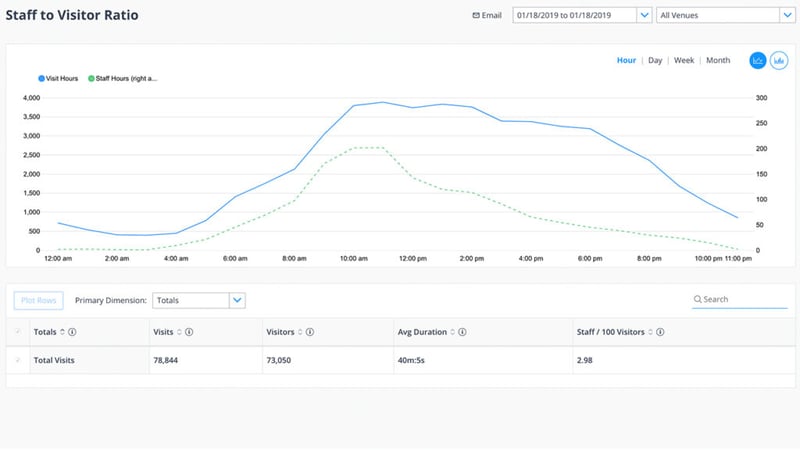Beonic and CrowdVision Technology Transforms Stadiums into Smart Venues

Our acquisition of CrowdVision helps us strengthen our video analytics and LiDAR capabilities which expands the benefits we can provide to our customers. CrowdVision’s market leading computer vision and machine learning algorithms improve the quality, accuracy, and validity of pedestrian traffic analytics.
These advancements are important because they enable us to design the most suitable and innovative solutions for our customers based on their unique requirements and environments. These solutions are incredibly beneficial in busy spaces like stadiums. Stadium managers must retain and grow their fan base, keep up with the changing needs of their technology-savvy fans, and prioritise health, safety, and security. The right technology and data analysis can help solve all of these challenges.
Data from cameras, WiFi, sales transactions (gathered through PoS integrations), people counters, and mobile apps, can provide stadiums a complete view of the fan from the moment they park until they exit the stadium. The data can also help stadium managers measure fan engagement, loyalty, and satisfaction to aid in providing the best possible fan experience as well as increasing revenue and audience sizes.
These data inputs ingested into an intelligent platform combined with expert analysis will transform stadiums into smart venues.
Stadium use cases
These are some use cases Beonic and CrowdVision solutions enable, through the combination of data technologies, to create smarter, efficient, and more enjoyable experiences for stadium fans.
- Crowd management – The analysis of data from various sources including cameras, LiDAR, and WiFi can identify areas of congestion, unauthorized access to areas, busiest times, popular areas, dwell times, heat maps, and fan pathing throughout the stadium. This helps stadium operators identify under-used entrances/exits to improve traffic flow. This also allows you to understand the busiest times and areas, so you can optimize staffing, security, and operations to meet demand and improve fan experience.

The analysis of data from various sources including cameras, LiDAR, and WiFi can identify areas of congestion shown in heat maps like the one above.
- Queue monitoring and alerting – Stadium operators can use camera or LiDAR data to measure, monitor, and predict queues. Staff can then implement countermeasures to reduce queue times. Stadiums can proactively manage congestion by detecting when queue times cross a threshold and alert staff as to when queues need attention or redirection.
- Asset tracking – Data from cameras, WiFi, BLE, RFID, or GPS can provide analytics on device patterns or generate real time alerts based on the location of an asset.
- Staff optimization – Data from cameras, WiFi, BLE, or LiDAR can provide a ratio of staff to fans and the impact staff ratios have on queue times, congestion, and more. In the event of a health and safety incident, the Beonic platform can detect the nature and location of the incident in real time and notify staff instantaneously. Staff can also receive automated notifications to optimize cleaning cycle frequencies based on increased or decreased fan volumes.

Discover how fan traffic compares to staffing levels throughout the day, week, or season.
- Ticketing, accessibility, and access control – Beonic can analyse data from ticketing and access control systems to predictively model behavioural patterns that reduce congestion and ensure efficient egress and ingress access. Specific data sources such as camera or LiDAR can also detect the behavioural patterns of fans based on classifications such as a person walking or wheelchair moving. This data can help stadiums understand the most efficient paths for wheelchair users so stadium operators can plan safer and more efficient accessibility routes and services.
- Fan experience – Understanding the fan experience starts with observing behavioural patterns. Data from cameras, WiFi, and LiDAR can map common fan journeys. Then, the journeys are analysed to determine which ones result in a positive experience or negative experience. Factors such as time to locate or reach seating, distance to amenities, or queue times will contribute to fans overall satisfaction. In addition, Beonic's intelligent marketing tools can deliver a survey to fans relevant to their journey. This allows stadium operators to qualify which fan journeys or aspects of a journey require improvement.
- Marketing, redemption, and payment – Stadiums can deliver targeted content to fans based on their behavior and location in the stadium. Marketing teams can then understand how effective different campaigns are at driving fan attendance or in-stadium purchase decisions.
- Sponsorship and advertising – Stadiums can harness data gathered from fans during events to provide advertisers and sponsors an increase in their reach and frequency. For example, stadiums can utilize a WiFi Captive Portal to increase sponsorship yield by enabling the re-targeting of in-stadium ad campaigns across digital channels like email, social media, or web. Fans can be retargeted following their attendance at stadium events when brand awareness levels are much higher.
By analyzing these data inputs, stadiums can understand what is happening to an entire fan population in real time. This enables you to act decisively to increase efficiency and profitability while improving the fan experience. Over time, this data accumulates and can provide reliable evidence for planning, maintenance management, and investment decisions.
If you are looking to improve your fans’ experience as well as your bottom line, we can help provide the fan measurement data and insights that you need to make better decisions.
Check out how these solutions are incredibly beneficial in other verticals like airports, hospitality venues, and retail venues.